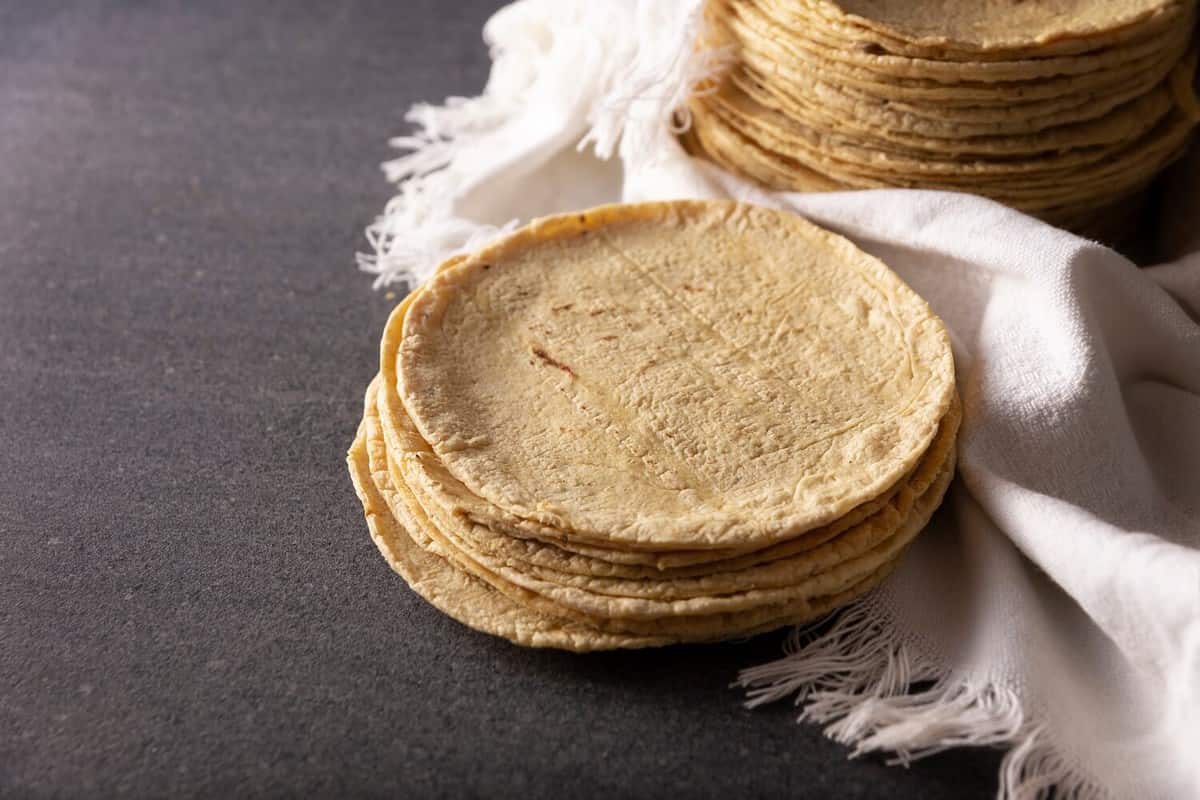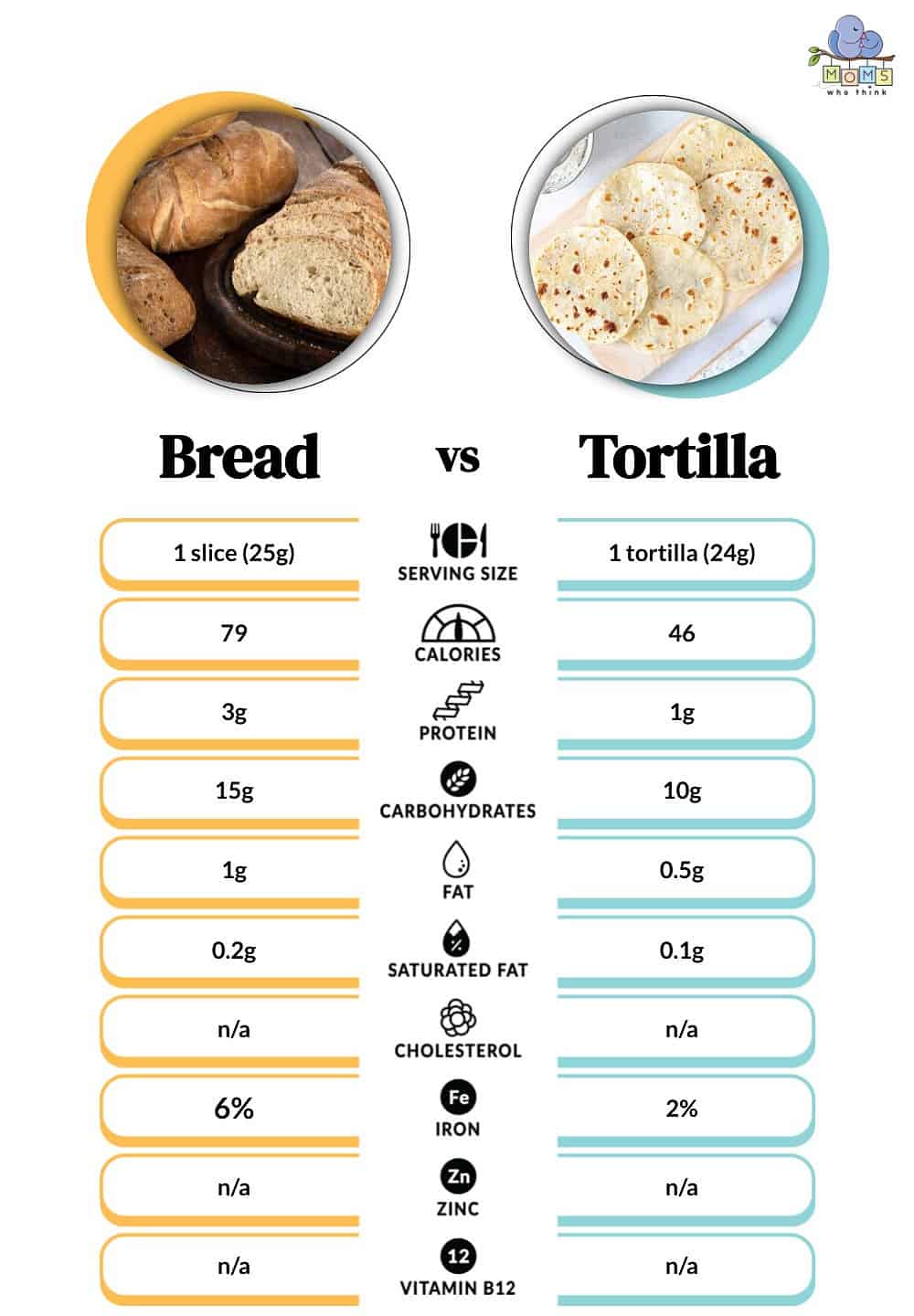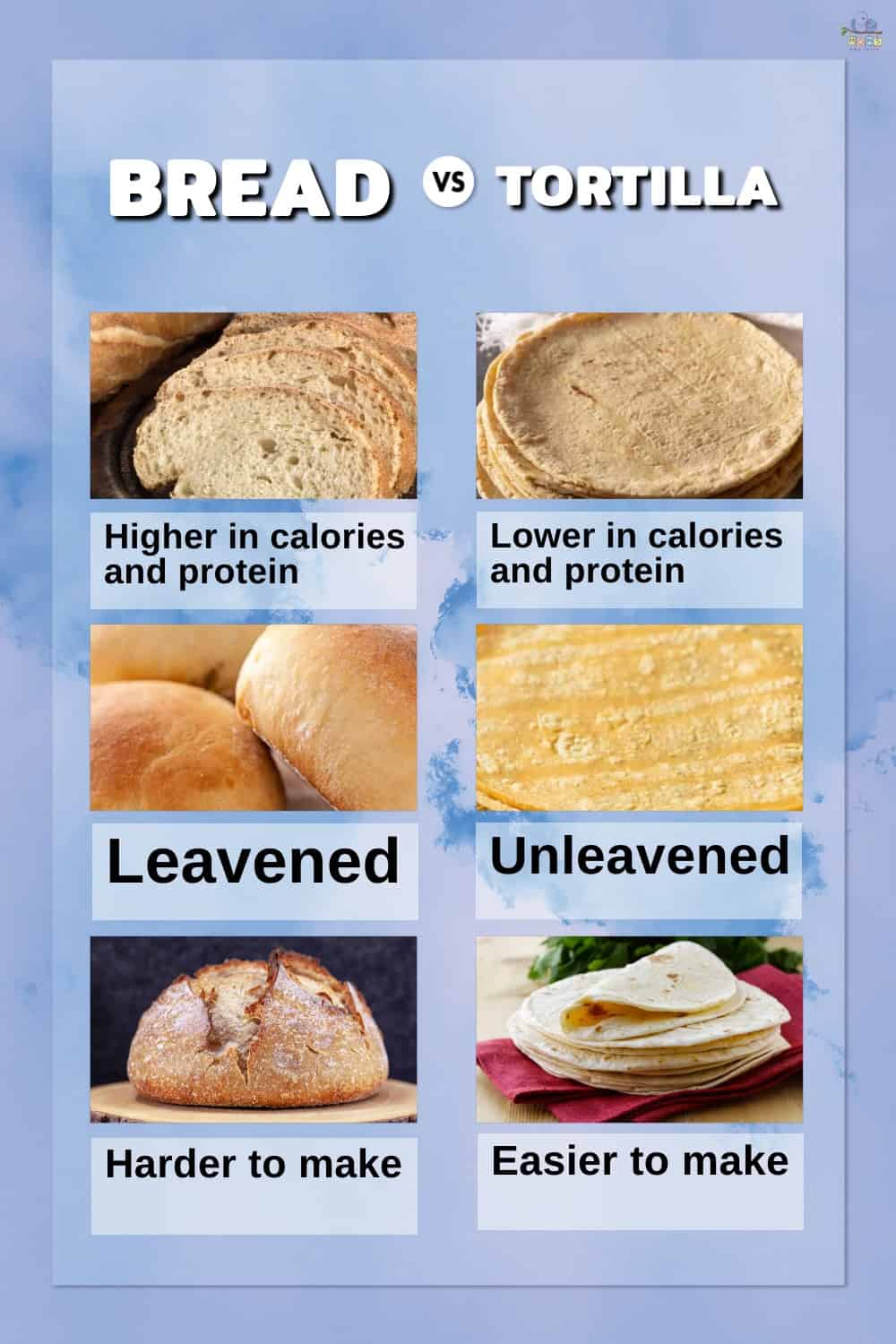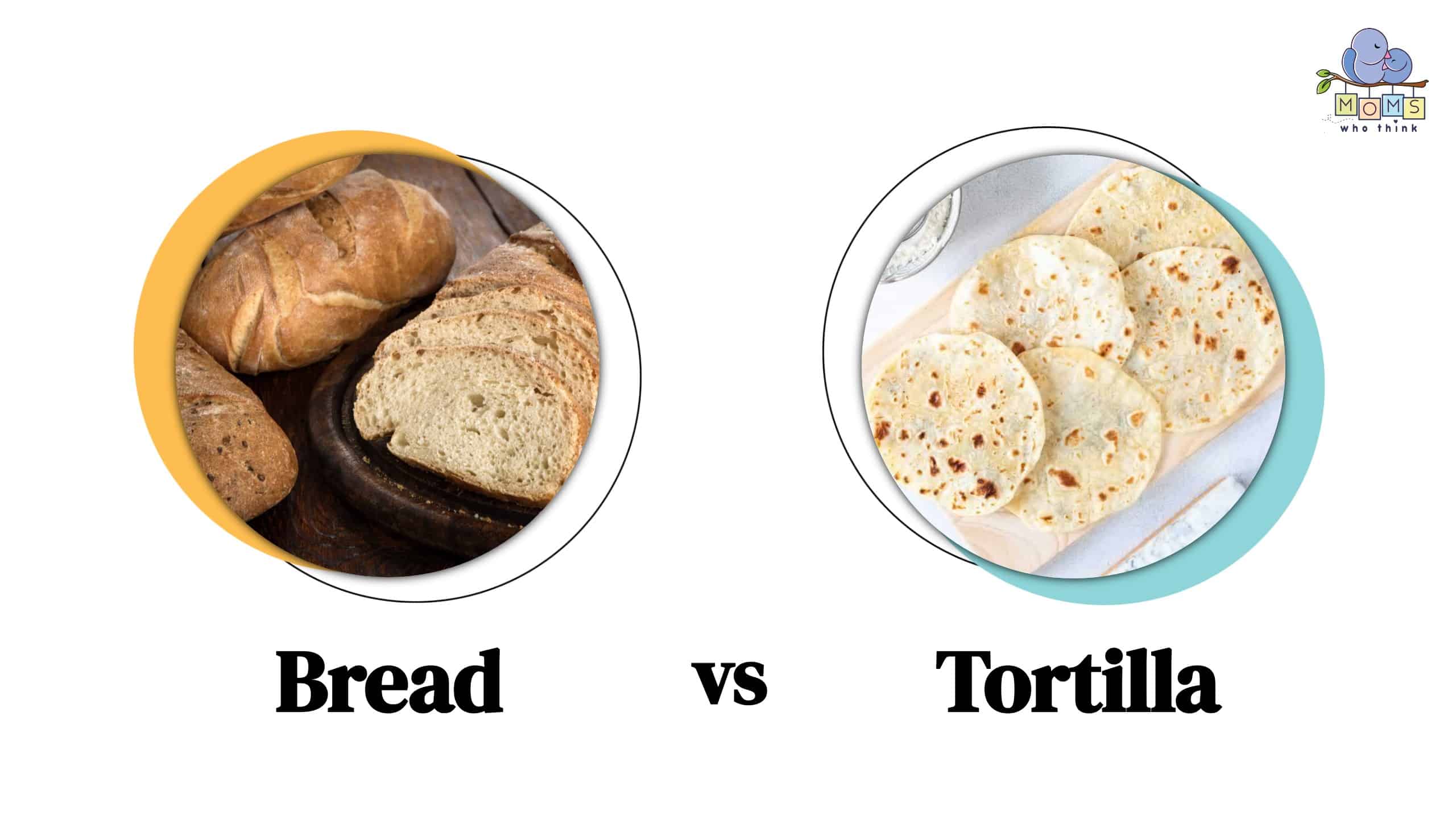Depending on your culture or love of food, you may use bread or tortillas on a regular basis, but have you ever wondered how they differ? The fact is that both of these ingredients are very similar. However the primary difference between bread and tortilla is that bread is leavened, meaning yeast is added to make it rise, and tortillas are unleavened, so they’re flat. Let’s dive deeper into the epic debate of bread vs. tortilla.
Bread vs. Tortilla: Definitions
Talking about the differences between bread and tortillas can be a little complex without first learning how bread and tortillas are really defined.
What is Bread?
Bread is separated from tortillas and other similar products due to the fact that it's leavened. Meaning, it rises when baked to provide the look that we’re all familiar with. Bread is a very common ingredient that’s available all over the world, and that’s because it’s so simple. All it takes is five ingredients: salt, flour, water, sugar, and yeast. The bread is aerated and fermented, and then once it rises, it’s rolled into the desired size and shape. Then, it’s baked and ready to serve.
There are many types of bread, including white, brown, multigrain, rye, Irish, and more, and most are produced using similar steps.
What is a Tortilla?
Tortillas are unleavened flat breads, which means they don’t have the yeast that makes them rise. They’re made out of wheat flour or corn with a bit of water and salt. Tortillas are widely used in Latin America, often in the place of bread. Tortillas are used on a number of dishes, from tacos to quesadillas. They can also be fried and used as chips. When tortillas are made out of corn, the dried corn is boiled in a pot, and then calcium hydroxide is added. Tortillas can also be made at home using a tortilla press. There are many variations of tortillas available, including those made of beetroot and gluten-free tortillas.
Bread vs. Tortillas: What are the Differences?

©Sergio Hayashi/Shutterstock.com
The main difference in the debate of bread vs. tortilla is that traditional bread is leavened, so it rises and takes shape. Tortillas don’t do that, and they’re not alone. Other types of bread, like roti and matzah, are also unleavened.
How They’re Made
Tortillas are typically corn or flour-based. These days, corn tortillas are usually made of hominy, which is an alkali-treated corn flour. Flour tortillas are made with wheat flour. Flour tortillas are also very basic, requiring only water and flour. You can also add seasoning, like salt, but it’s not necessary to prepare the tortilla.
Bread is also very simple, and technically, it only requires two ingredients: water and flour. However, bread is different because it needs that leavening agent, which can be baking soda, baking powder, or yeast, among other options. You can use many different types of yeast, including fresh yeast, dry yeast, activated yeast, or a yeast starter.
While you’re making bread, you can add different ingredients that can adjust the color and taste. Additional possible ingredients include:
- Eggs
- Milk
- Sugar
- Butter
- Salt
- Oil
Regardless of which bread you make, you’ll need to make the leavened or unleavened bread into a dough by combining the ingredients. Tortillas are easier because you only need to combine the wet and dry ingredients. Bread might have to be in the oven for a specific amount of time or the ingredients may need to be added in a certain order.
The dough will then need to be kneaded so it becomes smooth and elastic. Kneading creates the gluten-free structure that helps the final product hold its shape.
Proofing Process
The processes differ a bit at this point. When you make tortillas, you don’t need to proof the dough because the tortilla won’t rise. Bread and leavened bread needs to rest and proof (rise). Many bread varieties can have multiple proofing stages and different methods depending on which type you’re making.
Shaping Process
Next, there’s a shaping process that produces the final product. Shaping tortillas is relatively easy. You just roll it into a small ball and then use a rolling pin to make the round shape of the tortilla. Some tortillas are also made into square and oval shapes.
Leavened bread can be a bit more complicated and take more steps to create the shape because many types of bread are different shapes. Baguettes are longer, challah is braided, etc. Once shaped, leavened bread is scored by making incisions in the dough. The point of that is to create a weak spot so the bread will expand when it’s put in the oven and it won’t crack.
Baking
Once each type of bread has its initial shape, they each have their own baking methods. Tortillas are cooked in a frying pan or a very hot griddle. The idea is to give it an even lighter color. Tortillas cook fast, often taking between 10 seconds to one minute per side depending on the heat in the pan and the size of the tortilla.
The baking process for leavened bread will depend on the type of bread, but most will bake in a gas or electric oven. The baking temperatures will depend on the type of bread you’re making, so do your research ahead of time.
Use
The other main difference between bread vs. tortilla is how they’re used. Traditional bread has many uses but it’s typically a vessel for meat, soup, veggies, jams, and other types of sandwiches.
Corn tortillas are mostly used as an ingredient in quesadillas, tacos, and enchiladas. Wheat tortillas are flexible and are often used for quesadillas and burritos due to their flexibility.
Bread vs. Tortillas: Nutritional Differences
As far as vitamins are concerned, neither bread nor tortilla is loaded with them, although bread does have more iron than tortillas. In a side-by-side comparison, the bread does have a few less healthy attributes, including more calories, carbs, and fat than tortillas. The table below provides a better picture.

©
Alternatives for Tortillas
There are many different substitutes that you can use for tortillas if you’re looking for a different flavor or texture.
Coconut Wraps – They hold many types of food very well and they’re a very healthy option. Coconut wraps are high in fiber, and they have healthy fats that promote weight loss. Plus, they’re gluten-free and they’re vegan, so they’re ideal for folks with dietary restrictions.
Pita Bread – Think of it as the Mediterranean version of tortillas. This alternative is great because it’s a flatbread that can be used in a variety of dishes. Pita is made out of yeast. However, it doesn’t typically rise. Because of the higher temperature, it has a softer texture.
Dosa – This is a South Indian pancake that’s similar to a tortilla, but it’s made from black gram flour and rice. It’s thinner and crisp, similar to some tortillas. You can fill it with many foods, from meat to veggies.
Nori Sheets – Nori sheets are a type of seaweed that’s typically used in sushi, but it’s also a healthy alternative that can replace a tortilla. The sheets are very high in fiber and rich in minerals, and their salty flavor helps them to pair well with many fillings.
Alternatives for Bread
Many people love sandwiches and other dishes that include bread, but they know that’s not exactly the healthiest ingredient in the world. Many forms of bread include processed ingredients, and most bread is filled with calories and carbs. Luckily, there are many healthier alternatives to consider:
Rice Cakes – You can use two rice cakes to take the place of bread. Inside, you can layer up your turkey, cheese, peanut butter & jelly, or anything else you like, and your sandwich will be much healthier.
Lettuce Wraps – Bring your responsible eating to the next level by taking out the bread and swapping in the lettuce wraps. You can actually use lettuce to replace bread and tortillas. Wrap the filling up in the lettuce or layer it on top. Either way, you’ll be enjoying a healthy meal.
Rice Paper – Rice paper does contain some carbs, but it’s a much healthier alternative to traditional bread. Use it to wrap your meats, tomatoes, lettuce, and anything else you enjoy.
Nori Sheets – Nori sheets also work well as substitutes for dishes that would typically use slices of bread. The sheets are tasty, and they offer many vitamins and nutrients.
Egg Wrap – Cook up a very thin egg omelet, and you can use it as a wrapper for your next dish. Stuff it with healthy ingredients, like spinach and bell peppers, and you have yourself a delicious breakfast meal. Eggs have a lot of nutrients, protein, and healthy fats, so it’s a great healthy alternative.
Vegetable Options
Portobello Mushroom – If you like mushrooms then you can find a large-cap portobello mushroom and pile your meat and veggies in between two slices to make a sandwich. Add a little salt and pepper for some extra flavoring.
Bell Peppers – Either cut the peppers in half or make a hole in the pepper and stuff your ingredients inside and eat around it.
Eggplant Disks – Cut the large end of an eggplant into thin disks and then add seasoning before throwing them in the oven. Once they’ve baked, they provide a sturdy base for your sandwich. If you want a deli-style sandwich, you can cut the eggplant long-wise and eat it that way.
Bread Recipes
There are so many different ways to bake bread that it’d be almost impossible to list them all. However, here are some recipes we recommend if you're on the bread side of the bread vs. tortilla debate:
PrintCheese Bread
- Yield: 2 loaves 1x
Ingredients
For dough:
1 cup milk
2 eggs
½ cup butter softened to room temperature
1 ½ teaspoons salt
¼ cup sugar
6 oz. extra sharp cheddar cheese, shredded (2 cups)
4 cups flour
4 oz. extra sharp cheddar cheese, cut into ½ inch dice (1 ½ cups or a bit more)
Melted butter for brushing
For yeast sponge:
1 (¼ oz) package dry yeast
¼ cup water, warmed to 115°F
1 teaspoon sugar
Instructions
1. To make the dough: Scald milk. Whisk in butter to melt. Add salt and sugar and mix well. Let cool to room temperature.
2. To make the sponge: Dissolve yeast in warm water. Add sugar. Let stand uncovered in a warm place to proof, about 10 minutes.
3. Combine milk-butter mixture, proofed yeast, eggs, and shredded cheese in the bowl of a standing mixer fitted with the paddle attachment.
4. Add 2 cups of the flour and mix well. Add the remaining 2 cups flour and beat to make a soft dough.
5. Coat a medium bowl with butter or vegetable spray. Place dough in greased bowl. Coat a piece of plastic wrap with vegetable spray ( to prevent sticking) and place it loosely over dough. Refrigerate for at least 2 hours, or overnight.
6. Coat the bottom and sides of two 9 inch by 5 inch by 3 inch loaf pans with vegetable spray. Turn dough onto a lightly floured work surface. Divide dough in half. Pat or roll one half gently to an 9 inch by 12 inch rectangle.
7. Scatter half of the dice cheddar cheese over dough square. Fold in thirds to form a loaf. Place seam side down in prepared pan. Repeat to make the second loaf. Allow to rise in a warm place until double in size, 1 to ½ hours.
8. Place the oven rack in the middle position. Preheat the oven to 400 degrees F.
9. Brush the loaves with melted butter, for a darker crust. Bake 20 to 25 minutes until golden brown. Remove pans from oven. Turn out of pans onto a rack to cool. Store wrapped in wax paper at room temperature.
- Amish Friendship Bread – A tasty bread with a unique twist.
- Honey Oatmeal Bread – Honey makes this bread sweet and tasty.
- Blueberry Bread – A cup of blueberries and some sugar make for tasty bread.
- Walnut Bread – Chop up walnuts and spread them evenly through this tasty bread.
- Chili Cheese Cornbread – Cheddar cheese, green chilies, and sour cream make for a very unique recipe.
Tortilla Recipes
You can use tortillas for a number of dishes. It’s less of an ingredient but more of a base for many tasty recipes. Here are some dishes we recommend:
- Beef Fajitas – Serve these fajitas with tortillas and cheese.
- Cilantro and Lime Beef Enchiladas – Roll these beef treats into warm tortillas.
- Crockpot Beef Taco Casserole – Add tortilla strips to the meat for a tasty treat.
- Mexican Lasagna – Use tortillas instead of lasagna noodles.
- Fiesta Beef Enchilada Skillet – Mix in bits of tortilla for texture.
Conclusion

- The biggest difference between bread and tortillas is that one is leavened, while the other is not. This causes bread to rise, while tortillas stay flat.
- Bread is more time-consuming to make than a tortilla; this might influence your decision about which one to make if you're short on time.
- Bread has more calories than a tortilla, but it also has more protein. Of course, adding meat to a tortilla and turning it into a wrap will give you plenty of protein.
Although there are plenty of differences in the battle of bread vs. tortilla, both ingredients are similar in their own ways. Use either one properly in the applicable dish, and you’ll have a meal your family won’t soon forget.


